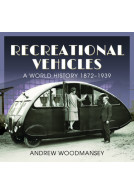The Canal Pioneers (Hardback)
Canal Construction from 2,500 BC to the Early 20th Century
Imprint: Pen & Sword Transport
Pages: 203
Illustrations: 100
ISBN: 9781473860490
Published: 6th January 2017
(click here for international delivery rates)
Order within the next 5 hours, 17 minutes to get your order processed the next working day!
Need a currency converter? Check XE.com for live rates
| Other formats available - Buy the Hardback and get the eBook for free! | Price |
|---|---|
| The Canal Pioneers ePub (26.2 MB) Add to Basket | £10.00 |
This is the story of canals used for transport and the men who built them from the earliest times, up to the end of the ninteenth century. This is a very long history: stones for the pyramids of Egypt were brought to the site by canal and one of the most imposing canal systems ever built, the Grand Canal of China, was begun in the sixth century BC.
Development after the end of the Roman Empire was slow, but saw the steady improvement of river navigations through locks – the mitre gates were actually first designed by Leonardo da Vinci.
The modern age of canals that cross summits began in France, and the most famous of these early waterways was the magnificent Canal du Midi, the brainchild of Pierre-Paul Riquet, completed in 1681. It was a visit to this canal, when he was a teenager on the Grand Tour, that inspired the Duke of Bridgewater to build his famous canal that inspired a rush of canal construction in Britain.
Britain’s canals became the essential transport route that made the country’s industrial revolution possible, thanks to engineers such as James Brindley, William Jessop and Thomas Telford. It was a period of intensive construction that lasted for fifty years from 1760. It saw many innovations from the use of cast iron for bridges and aqueducts, to inclined planes and vertical lifts to move boats from one canal level to another. The nineteenth century also saw extensive canal systems developing in North America, such as the famous Erie Canal, and culminated in two great ship canals at Suez and Panama.
The book tells an exciting story of canal development and the many men who made it possible.
As featured in
Canal Boat
Engineering history, at least the sort I grew up with, tended to be nationalistic. Britain's engineers received most attention. Many were indeed great men but foreign engineering was overlooked. Anthony Burton has redressed the balance taking a worldwide look at canal construction going back as early as 2500BC (BCE). Your taste may not extend to canals, but the book should persuade of their intrinsic interest. It's well written and includes many interesting pictures. Definitely one of the better readable books on the subject.
Society of Model & Experimental Engineers
Anthony Burton has fitted 4,500 years of canal history into under 200 pages. He has done this by carefully selecting waterways from around the world to provide the best examples of trends and developments through the years.
Railway and Canal Historical Society
... All his [Anthony Burton] work is meticulously researched and The Canal Pioneers is no exception...
Towpath Talk, May 2017 – reviewed by Robert Davies
... The author deals with the matters of spanning the centuries without the detail becoming boring and it is a very engaging read. The text is superbly supported by a collection of photographs and illustrations which add considerable value to the stories told. It covers almost 200 pages and, at £25 in hardback, is good value and a rewarding investment.
Reading more like a series of interrelated articles than a linear history, the story of canal construction is superbly told. Another of the book's great strengths is the illustrations, with care taken throughout to include the very best photographs and engravings.
Narrow Boat, April 2017 – reviewed by James Francis Fox
The theme is interesting, very interesting, since all civilizations to a greater or lesser extent joined in the creation of what we might call the first modern breakthrough within ancient culture.
José Manuél Rico Cortés (Mister JM) - Miniaturas JM
A curious book of great cultural value for lovers of history in general and interesting for modellers of buildings and terrains in particular.
Read the full Spanish review here.
'Illustrated with vintage black-and-white or colour photography on almost every page, The Canal Pioneers: Canal Construction from 2,500BC to the Early 20th century lives up to its title as an expertly researched, in-depth history of canals used for transport and the people who built them, from the dawn of civilisation to the modern day. An extraordinary, world-spanning tour of human ingenuity, engineering, and marvels, The Canal Pioneers is an excellent addition to both public and college library world history shelves. Highly recommended.'
Midwest Book Review
Author and Canal Boat contributor Anthony Burton told the story of the construction of our waterways in his book [link=https://www.pen-and-sword.co.uk/The-Canal-Builders-Hardback/p/11199]
Canal Boat magazine, April 2017
The Canal Builders[/link] (still in print after 40 years), but this time he takes a wider view - both geographically and chronologically.
Beginning right back in the ancient world with the Egyptians constructing canals to help transport stone for the pyramids, he takes us through the Roman era, the Grand Canal of China, the canal cities of Amsterdam, Venice and Bangkok, and the 17th century French canals, to industrialisation and the growth of Britain's network - and then on to the North American waterways and the first ship canals. But it isn't just a description of the routes - the book covers the development of the technology, from primitive flash-locks to our familiar pound-locks and from early inclined plane boat-lifts to modern ship-lifts.
Although £25 is a pretty hefty amount for what is a fairly small, hardback book, as an easy-to-access, concise, well-presented and enjoyable account of the construction of canals, it is well worth the investment.
Waterways World, April 2017 - reviewed by James Francis Fox
Even today, much commercial cargo still travels by
Firetrench
water. The building of canals was vital to opening up access to trade and industry. The author has provided a comprehensive review from 2,500 BC to modern times of the development of canals. Very Highly Recommended.
Read the full review here.
This is an interesting and comprehensive review of the genesis of canals. How they met a need and the lessons learned and lost in canal construction from the earliest known records.
Richard Latham
It has a very clever title "The Canal Pioneers". Since it outlines why these early entrepreneurs and engineers succeeded and often failed. Mostly because they were ahead of existing technical knowledge and supportive mechanical devices.
Along the way the demand for canals and the need for innovation to turn dreams into fruition.
In their on way, alongside mining canals hastened developments in pumping out water, steam engine development and tramways/railways.
The expansive range of looking at the global approach to canal construction gives an interesting contrast to different backgrounds and national thinking.
It is a balanced book written by an author who is a recognised authority in this field.
As with all Pen and Sword hardback editions is beautifully bound with wonderful illustrations and pictures.
A must for any transport enthusiast and anyone with an interest in industrial heritage. Apart from the large shipping canals, most use today is thanks to the efforts reclaiming forgotten waterways and restored canals now serve as leisure holidays.
As this book reminds however those using them today can marvel at the engineering efforts with tunnels, bridges and aqueducts. It is interesting to learn that families made their homes on narrow boats to offset poverty and maintain a way of life competing with the railways. However, this book while not detailing the full impact on those who laboured in canal construction, the raw figures of those who lost lives in these vast projects is chilling and awe inspiring. From another age, a time when life appears a disposable commodity. We should in our lives of leisure time and pleasure working a lock or looking down a river valley spare a thought of the true cost of our holiday.
About Anthony Burton
Anthony Burton has been writing about the history of transport and technology for fifty years. His books include Remains of a Revolution, The Railway Builders, The Locomotive Pioneers and biographies of Thomas Telford, George and Robert Stephenson and a biography of Marc and Isambard Brunel (due to be published in 2022). He has worked extensively in TV and most recently as historical adviser to the Discovery Channel series Industrial Revelations, More Industrial Revelations and On the Rails.






















